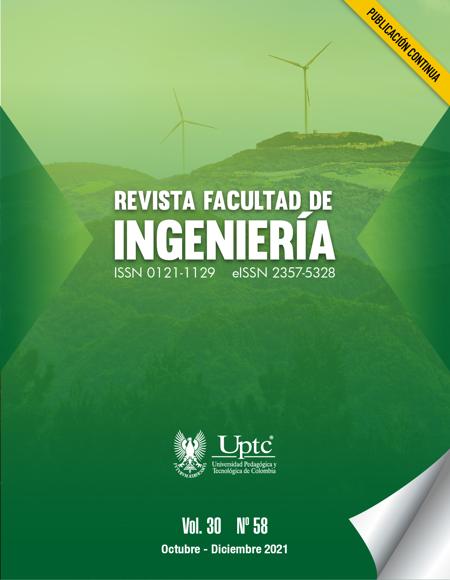Analysis of Satellite Images Using Deep Learning Techniques and Remotely Piloted Aircraft for a Detailed Description of Tertiary Roads

Abstract
This document presents the results of a proof of concept for describing with more detail the social and complementary infrastructure around the tertiary roads of the Taminango region in the department of Nariño, Colombia. A dataset with samples of free satellite images from Google Maps and OpenStreetMaps was obtained. Then, a supervised deep learning algorithm with FCN (Fully Convolutional Network) topology is applied for the points of interest labeling process and the identification of the state of the roads using Keras and TensorFlow. Subsequently, a system consisting of a desktop application and a mobile application that integrates the functionalities of the trained algorithm through an intuitive interface and simple logic that stimulates interaction with the consultant is proposed. The desktop application includes a GUI designed in Python for tagging points of interest. The mobile application was developed with Flutter and comprises a database with documentation of the routes and road network in the region. It includes an augmented reality system in Vuforia Engine and Unity with virtual content developed in Blender and SolidWorks; A 3D model of the map of the region has been recreated for easier interaction and visualization of the points of interest and the status of the studied roads. In addition, complementary information was collected through remotely piloted aircraft for data acquisition in environments difficult to access, and through the community participation for the description and identification of areas not visible on official maps or statistics. This study addresses a method for the classification and identification of state of tertiary road network of the studied region, as well as labeling points of interest for the efficient management of resources for the development of new infrastructure there.
Keywords
tertiary roads, satellite images, deep learning, remotely piloted aircraft, community participation, augmented reality
Author Biography
Maria-Camila Moreno-Vergara
Roles: Supervision, Formal Analysis, Investigation, Methodology, Writing – Review and editing.
Brayan-Daniel Sarmiento-Iscala
Roles: Conceptualization, Investigation, Validation, Writing – Review and editing.
Fabián-Enrique Casares-Pavia
Roles: Methodology, Conceptualization, Writing - Review and editing.
Yerson-Duvan Angulo-Rodríguez
Roles: Investigation, Writing – Review and editing.
Danilo-José Morales-Arenales
Roles: Validation, Writing – Review and editing.
References
- Y. Nachmany, H. Alemohammad, "Detecting roads from satellite imagery in the developing world," in Proceedings of the IEEE/CVF Conference on Computer Vision and Pattern Recognition Workshops, 2019, pp. 83-89
- S. G. Kanakaraddi, A. K. Chikaraddi, B. L. Pooja, T. Preeti, “Detection of Roads in Satellite Images Using Deep Learning Technique,” ICT Analysis and Applications, vol. 154, pp. 441-451, 2021. https://doi.org/10.1007/978-981-15-8354-4_44 DOI: https://doi.org/10.1007/978-981-15-8354-4_44
- A. Courtial, A. El Ayedi, G. Touya, X. Zhang, “Exploring the Potential of Deep Learning Segmentation for Mountain Roads Generalisation,” ISPRS International Journal of Geo-Information, vol. 9, no. 5, p. 338, 2020. https://doi.org/10.3390/ijgi9050338 DOI: https://doi.org/10.3390/ijgi9050338
- N. Choquehuayta, “Detección de embarcaciones utilizando Deep Learning e imágenes satelitales ópticas,” Grade Thesis, Universidad Nacional San Agustin de Arequipa, Arequipa, Perú, 2020
- K. Ayush, B. Uzkent, M. Burke, D. Lobell, S. Ermon, “Generating Interpretable Poverty Maps using Object Detection in Satellite Images,” in IJCAI International Joint Conference on Artificial Intelligence, 2020, pp. 4410–4416. https://doi.org/10.24963/ijcai.2020/608 DOI: https://doi.org/10.24963/ijcai.2020/608
- B. Varona, A. Monteserin, A. Teyseyre, “A deep learning approach to automatic road surface monitoring and pothole detection,” Personal and Ubiquitous Computing, vol. 24, no. 4, pp. 519-534, 2020. https://doi.org/10.1007/s00779-019-01234-z DOI: https://doi.org/10.1007/s00779-019-01234-z
- P. Sanjeewani, B. Verma, “Single class detection-based deep learning approach for identification of road safety attributes,” Neural Computing and Applications, vol. 33, pp. 9691–9702, 2021. https://doi.org/10.1007/s00521-021-05734-z DOI: https://doi.org/10.1007/s00521-021-05734-z
- H. Gupta, O. P. Verma, “Monitoring and surveillance of urban road traffic using low altitude drone images: a deep learning approach,” Multimedia Tools and Applications, vol. 2021, pp. 1-21, 2021. https://doi.org/10.1007/s11042-021-11146-x DOI: https://doi.org/10.1007/s11042-021-11146-x
- X. Zhou, L. Tang, D. Lin, W. Han, “Virtual & augmented reality for biological microscope in experiment education,” Virtual Reality & Intelligent Hardware, vol. 2, no. 4, pp. 316-329, 2020. https://doi.org/10.1016/j.vrih.2020.07.004 DOI: https://doi.org/10.1016/j.vrih.2020.07.004
- H. A. Bautista, M. A. Mendoza Pérez, R. G. Cruz Flores, "Diseño de una aplicación en realidad aumentada para la enseñanza de un seguidor de línea," RILCO: Revista de Investigación Latinoamericana en Competitividad Organizacional, vol. 2, no. 7, pp. 9, 2020
- I. M. Melo Bohórquez, "Realidad aumentada y aplicaciones," Tecnología Investigación y Academia, vol. 6, no. 1, p. 28-35, 2018